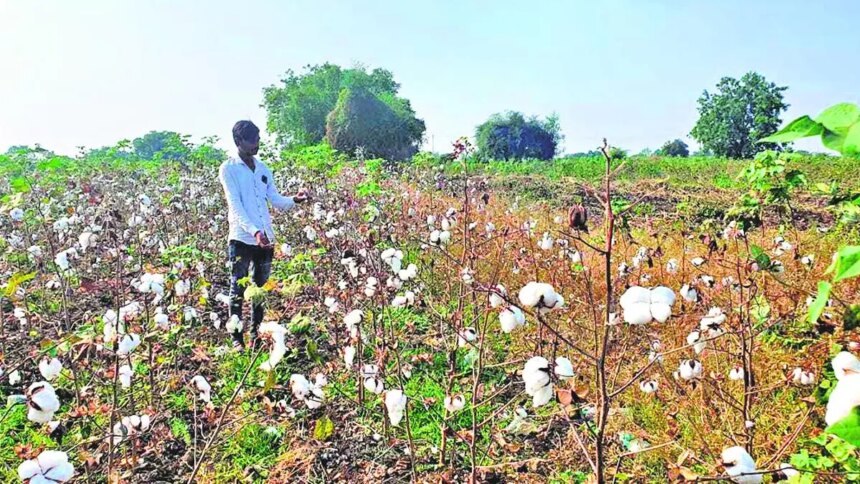
The area under cotton in Punjab has significantly declined over the last few years – from 2.68 lakh hectares (lh) in 2018-19 to 0.97 lh in 2024-25
There has been some reduction in the cases of pest attacks following the launch of a pilot project last season to a monitor and control pink bollworm (PBW) infestation in cotton crop in Punjab.
But, the reaction from the farmers is mixed, as some of them have complained that it did not help manage PBW. As a result, they incurred losses. However, there is unanimity among them to reduce the area under cotton,partly due to PBW and primarily due to non-availability of water.
“Though the machine helped us get the alert in time, the PBW is unmanageable even after sprays,” said Beant Singh, a farmer in Sri Muktsar Sahib district. He said he would reduce the area under cotton this year to 5-6 acres from 15-16 acres earlier, mainly due to PBW, as well as water issue, too. He said the yield has dropped considerably, reducing his profit since he farming on leased land.
Sharp drop in acreage
On the other hand, Roop Singh of Faridkot district, said he plans to cut cotton area to 6-7 acres from 15 acres last year due to water availability, but praised the pilot project of the government which helped manage PBW and also lowered his expenditure on pesticides.
The area under cotton in Punjab has significantly declined over the last few years – from 2.68 lakh hectares (lh) in 2018-19 to 0.97 lh in 2024-25, resulting in the production also coming down from 12.22 lakh bales (of 170 kg each) to 2.72 lakh bales. The primary reason for the surge in PBW, a highly destructive pest of cotton, is attributed to the stacking of cotton crop residues near fields.
This increases infestation levels, especially when cotton stalks, unopened bolls, and lint residues are stacked near agricultural fields, allowing the larvae to survive through diapause and emerge in large numbers during the subsequent cropping season.
Pilot assessment
As per the results assessment of the project, the implementation helped significantly improve pest detection, management efficiency, and cost-effectiveness compared to traditional methods –38.6 per cent reduction in pesticide use while keeping PBW damage under control and 18.54 per cent increase in yield over conventional methods, highlighting the potential of Al traps to enhance cotton productivity while reducing chemical dependency.
The Nagpur-based ICAR-Central Institute for Cotton Research (CICR) last year implemented the project in 18 villages of three key cotton-growing districts of Punjab, funded by the Union Agriculture Ministry in collaboration with Punjab Agricultural University (PAU) and the State government.
The CICR deployed its own Al-based smart pheromone trap technology to overcome the limitations of conventional traps. The smart trap system comprises a single-board computer, a camera module, a weather sensor, and a GSM transmitter, all powered by a solar panel with a rechargeable battery. A control unit triggers the camera module, fixed on the land, at hourly intervals to capture images of trapped insects, according to Prashant Kumar Dash, assistant director general of ICAR.
Forewarning system
The system optimises and transmits the combined data (trap catch images and corresponding weather parameters) via a 4G GSM/Wi-Fi module to a remote server. An Al-driven machine learning algorithm (YOLO) then processes the images, counts the trapped insects, and delivers the analysed data to end users via mobile or PC applications, along with relevant weather information.
By correlating real-time trap catches with weather data, the pest dynamics over a wide area can be better understood. This, in turn, facilitates the development of a reliable pest forewarning system and improved pest management practices in cotton cultivation, according to the assessment report of the pilot project.
Stressing that real-time monitoring is essential for devising timely and cost-effective management strategies to control PBW, scientists said that dissemination of timely pest alerts and advisories to farmers helped to keep the damage below the economic threshold levels (ETLs).
Published on April 18, 2025










